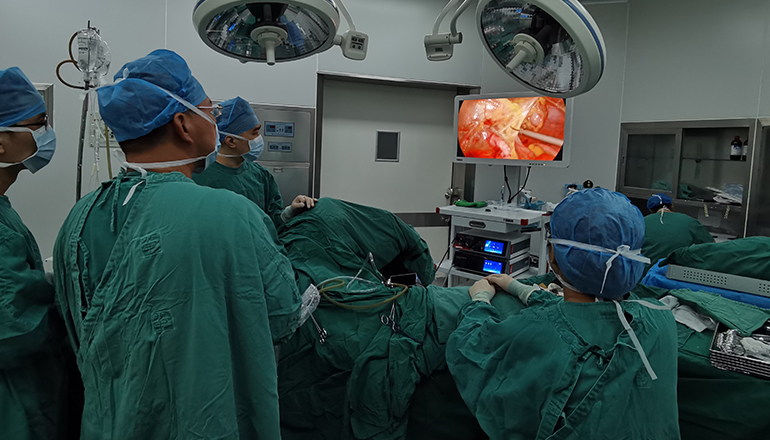- Shanghai, China
- [email protected]
- +86-21-58189111
Laparoscopic right hemicolectomy is a minimally invasive surgical procedure used to remove the right side of the colon or large intestine. This procedure is commonly used to treat colon cancer, Crohn's disease, diverticulitis, and other conditions that affect the large intestine.
The laparoscopic approach involves making small incisions in the abdomen and using a laparoscope, which is a thin tube with a camera and light at the end, to visualize the surgical site. The surgeon will also insert specialized surgical instruments through the incisions to perform the procedure. This approach provides several advantages over traditional open surgery, including smaller incisions, less pain, faster recovery, and a lower risk of complications.
During a laparoscopic right hemicolectomy, the surgeon will remove the right side of the colon along with any surrounding lymph nodes. The remaining portions of the colon will then be reconnected using sutures or staples. The procedure typically takes between two and three hours to complete, and most patients can return home within a few days of surgery.

Before undergoing a laparoscopic right hemicolectomy, patients will need to undergo a thorough evaluation to ensure that they are healthy enough for surgery. This may include blood tests, imaging studies, and other diagnostic tests. Patients may also need to make changes to their diet or medications prior to surgery.
Following surgery, patients will need to follow a specific diet and lifestyle regimen to aid in their recovery. This may include avoiding certain foods, taking medications, and gradually increasing physical activity. Patients may also need to attend follow-up appointments with their surgeon to monitor their recovery and check for any potential complications.
While laparoscopic right hemicolectomy is generally safe and effective, as with any surgical procedure, there are risks involved. These may include bleeding, infection, blood clots, and damage to surrounding organs or tissues. Patients should discuss the potential risks and benefits of the procedure with their surgeon before deciding to undergo surgery.
Overall, laparoscopic right hemicolectomy is an effective and minimally invasive surgical option for the treatment of a variety of conditions affecting the large intestine. By working closely with their healthcare team, patients can maximize their chances of a successful outcome and a smooth recovery.
Patients who undergo laparoscopic right hemicolectomy can expect to experience less pain, faster recovery, and a quicker return to normal activities than those who undergo open surgery. The smaller incisions also result in less scarring, making this an appealing option for those who are concerned about the cosmetic effects of surgery.
In addition to its benefits for patients, laparoscopic right hemicolectomy also provides advantages for surgeons. The enhanced visualization provided by the laparoscope allows for greater precision and accuracy during the procedure, which can result in better outcomes for patients. The smaller incisions also mean that the surgeon has a better view of the surgical site, reducing the risk of damage to surrounding tissues or organs.
Laparoscopic right hemicolectomy is generally considered to be a safe and effective surgical option for the treatment of a range of conditions affecting the large intestine. However, as with any surgical procedure, there are risks involved, and patients should discuss the potential benefits and risks of the procedure with their healthcare team before deciding to undergo surgery.
In conclusion, laparoscopic right hemicolectomy is a minimally invasive surgical procedure that can be used to treat a variety of conditions affecting the large intestine. By working closely with their healthcare team, patients can maximize their chances of a successful outcome and a smooth recovery. With its many benefits, including less pain, faster recovery, and smaller scars, laparoscopic right hemicolectomy is an appealing option for patients who require surgical treatment for their condition.
Leave a Comments